
 Today, we follow up last month’s wildlife attracting guide for Under-5s with another, more specific, activity for children to undertake outdoors. This time, we outline easy-to-accomplish flower growing activities that children can enjoy, to attract bees and other friendly insects to the garden. While flowering plants can be purchased commercially ready-grown, we’ll concentrate today on ways children can grow wildlife-friendly flowers themselves, from seed. After all, it’s far cheaper, much more fun as an activity, teaches children more about nature and will also give them a greater sense of achievement. If it all goes well, the result will be some pretty flowers to brighten the place up as well as a host of charming and beautiful little creatures visiting. Children may get to see different types of bee perhaps along with butterflies, hover flies, ladybirds and probably many more wonderful creatures that might otherwise never have visited. Children will generally find flowers, bees and butterflies not only beautiful to look at, but also fascinating once they really start to look closely. After all, what’s not to love about stunning flowers and the cute, colourful pollinators that will visit them!
Today, we follow up last month’s wildlife attracting guide for Under-5s with another, more specific, activity for children to undertake outdoors. This time, we outline easy-to-accomplish flower growing activities that children can enjoy, to attract bees and other friendly insects to the garden. While flowering plants can be purchased commercially ready-grown, we’ll concentrate today on ways children can grow wildlife-friendly flowers themselves, from seed. After all, it’s far cheaper, much more fun as an activity, teaches children more about nature and will also give them a greater sense of achievement. If it all goes well, the result will be some pretty flowers to brighten the place up as well as a host of charming and beautiful little creatures visiting. Children may get to see different types of bee perhaps along with butterflies, hover flies, ladybirds and probably many more wonderful creatures that might otherwise never have visited. Children will generally find flowers, bees and butterflies not only beautiful to look at, but also fascinating once they really start to look closely. After all, what’s not to love about stunning flowers and the cute, colourful pollinators that will visit them!
Sourcing Bee-Friendly Seeds
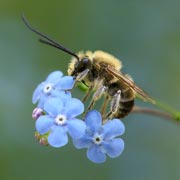 Parents/guardians of under-fives will need to supervise which seeds to buy — or to harvest free of charge at the end of a previous season. If purchased, they’re inexpensive with seed packets typically costing as little as £1.99 from places like Suttons, garden centres and even online from some supermarkets. Look out for seeds that are marked as suitable for growing bee-friendly and/or butterfly-friendly flowers, or are simply suitable for pollinators. Typical examples include seeds for poppies, sunflowers, forget-me-nots, sedum, buddleia, nasturtium, daisies, cornflower, cosmos and calendula. Even herbs will grow fragrant flowers that’ll attract pollinators if you allow them to grow to maturity. Good examples include mint, basil and thyme, any of which would serve a secondary purpose of being useful to eat — another useful and educational benefit of this activity for young children.
Parents/guardians of under-fives will need to supervise which seeds to buy — or to harvest free of charge at the end of a previous season. If purchased, they’re inexpensive with seed packets typically costing as little as £1.99 from places like Suttons, garden centres and even online from some supermarkets. Look out for seeds that are marked as suitable for growing bee-friendly and/or butterfly-friendly flowers, or are simply suitable for pollinators. Typical examples include seeds for poppies, sunflowers, forget-me-nots, sedum, buddleia, nasturtium, daisies, cornflower, cosmos and calendula. Even herbs will grow fragrant flowers that’ll attract pollinators if you allow them to grow to maturity. Good examples include mint, basil and thyme, any of which would serve a secondary purpose of being useful to eat — another useful and educational benefit of this activity for young children.
Even easier are seed packets that contain mixed wildflower seeds. As the name suggests, these contain a real mix, resulting in multi-coloured flowers that’ll liven up flower pots, balconies or garden beds and attract a multitude of different pollinator visitors.
Fun-to-Grow Seeds Just for Children
 Suttons and other seed suppliers even offer whole ranges of bee-friendly flower seeds just for children. These include a ‘Bug Magnet’ flower seed kit for kids containing Calendula daisy seeds, 8 bug stickers and even a magnifying glass for closer inspection of the visiting bees, butterflies and insects. The price of that example is only £2.49 (price correct at time of writing — even cheaper if you’re a member). Sainsbury’s offers something completely different with their Bee-Friendly Flower Bomb Kits for little ones. Timing of this post is perfect too, as all these seeds can be sown during March, April and May, with flowers appearing anywhere from March to the end of September.
Suttons and other seed suppliers even offer whole ranges of bee-friendly flower seeds just for children. These include a ‘Bug Magnet’ flower seed kit for kids containing Calendula daisy seeds, 8 bug stickers and even a magnifying glass for closer inspection of the visiting bees, butterflies and insects. The price of that example is only £2.49 (price correct at time of writing — even cheaper if you’re a member). Sainsbury’s offers something completely different with their Bee-Friendly Flower Bomb Kits for little ones. Timing of this post is perfect too, as all these seeds can be sown during March, April and May, with flowers appearing anywhere from March to the end of September.
Sowing the Seeds
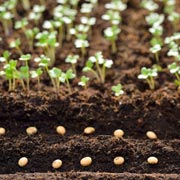 Commercially-supplied seeds will usually have instructions for sowing on the packets, so these can be followed easily. Generally speaking, though, there are a couple of main ways to sow flower seeds:
Commercially-supplied seeds will usually have instructions for sowing on the packets, so these can be followed easily. Generally speaking, though, there are a couple of main ways to sow flower seeds:
- The easiest way is for children to simply scatter seeds (spaced out according to individual instructions) onto some soft soil that’s been pre-prepared so it’s free of weeds. That might be, for example, in a flower bed, window box or in flower pots. The seeds can then be covered by a thin covering of sieved soil or compost and then slightly firmed down.
- Alternatively, children can sow the seeds in seed trays, flower pots, used yoghurt or margarine cartons or similar,
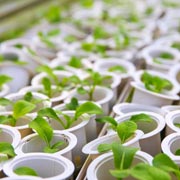 so long as whatever they use has drainage holes at the bottom (adults may need to supervise that part, for safety reasons). Drip trays will be needed underneath if this part is initially housed indoors. The earth used can be soil brought in from the outdoors or, of course, compost (suitable for seedlings and ideally peat-free as it’s better for the planet). Using this approach instead of the outdoor scattering approach will allow children to manually space out individual seeds more easily, once they’ve actually sprouted.
so long as whatever they use has drainage holes at the bottom (adults may need to supervise that part, for safety reasons). Drip trays will be needed underneath if this part is initially housed indoors. The earth used can be soil brought in from the outdoors or, of course, compost (suitable for seedlings and ideally peat-free as it’s better for the planet). Using this approach instead of the outdoor scattering approach will allow children to manually space out individual seeds more easily, once they’ve actually sprouted.
Either way, the soil should be kept moist over coming days/weeks, so children should check on progress daily.
Safety Notice
Read the seed packet because some seeds can be poisonous. Therefore, this activity should be undertaken only with the close supervision of a responsible adult. Children will need to be closely monitored when handling seeds and earth, and will need to take appropriate safety precautions, for example keeping hands away from the mouth and eyes and washing their hands with soap and water afterwards.
Along with regular watering, a suitable organic liquid feed will help to bring on some types of seedlings. However, as some liquid feeds can be poisonous, handling of it is best left to a supervising adult.
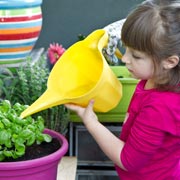 After about ten days to two weeks or so, seedlings should start to appear through the soil. Once they start to grow significantly, it may be necessary for children to ‘thin’ some of them out, by transplanting any that are cramped, so there’s only one plant every few inches. This will allow each plant to grow to a significant size in the coming weeks, free of overcrowding.
After about ten days to two weeks or so, seedlings should start to appear through the soil. Once they start to grow significantly, it may be necessary for children to ‘thin’ some of them out, by transplanting any that are cramped, so there’s only one plant every few inches. This will allow each plant to grow to a significant size in the coming weeks, free of overcrowding.
Once they’re mature, flowers should begin to appear and then it all starts to look rather beautiful. It may even be fragrant, depending on the plants chosen.
Along Come the Bees, Butterflies & More
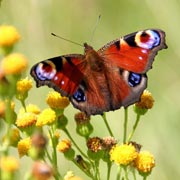 Once flowers are coming through, many types of delightful pollinators will soon follow. These are likely to include various types of bee, different kinds of butterfly, hover flies, ladybirds and potentially many other pollinators.
Once flowers are coming through, many types of delightful pollinators will soon follow. These are likely to include various types of bee, different kinds of butterfly, hover flies, ladybirds and potentially many other pollinators.
Children Learn from Nature
Children can then have educational fun taking a closer (but careful) look at the visiting creatures and perhaps even saying ‘hello’. Actually, it’s not a bad idea to encourage children to greet the visiting pollinators in this way because it demonstrates to children that each is a little being that deserves to live safely and be given space, peace and respect. Teaching children to recognise even the smallest creatures as individuals may also help to reduce the chances of children being fearful of them. 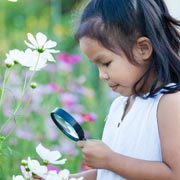 After all, little pollinators are generally very harmless, hard-working creatures who just want to go about their business in peace. They are, though, completely charming when you take the time to watch them and this is too easily missed by children if they’re glued to screens or kept indoors too much. Given the opportunity, children learn and benefit so much from nature, so this activity is very worthwhile one for under-fives and, indeed, for children of any age. Learning from/about nature also supports the ‘Understanding the World‘ aspect of the EYFS curriculum, which is so incredibly important to under-fives.
After all, little pollinators are generally very harmless, hard-working creatures who just want to go about their business in peace. They are, though, completely charming when you take the time to watch them and this is too easily missed by children if they’re glued to screens or kept indoors too much. Given the opportunity, children learn and benefit so much from nature, so this activity is very worthwhile one for under-fives and, indeed, for children of any age. Learning from/about nature also supports the ‘Understanding the World‘ aspect of the EYFS curriculum, which is so incredibly important to under-fives.
Looking for the Best Childcare Service in Willesden, NW10?
Or the best nursery or pre-school in Harlesden, Willesden or Kensal Green?
 Today’s guide was brought to you by Treetops Nursery, one of the best nurseries and pre-schools in the Willesden, Willesden Green, Kensal Green, Harlesden and NW10 areas of London. We’re independently rated by Ofsted as a Good early years provider in every category, so you know your baby, toddler or preschooler will be well looked after — and indeed will absolutely thrive — at Treetops Nursery. To register a place for your child, request a visit, ask a question or to find out more, please get in touch:
Today’s guide was brought to you by Treetops Nursery, one of the best nurseries and pre-schools in the Willesden, Willesden Green, Kensal Green, Harlesden and NW10 areas of London. We’re independently rated by Ofsted as a Good early years provider in every category, so you know your baby, toddler or preschooler will be well looked after — and indeed will absolutely thrive — at Treetops Nursery. To register a place for your child, request a visit, ask a question or to find out more, please get in touch:
Next Time:
Next time, we’ll publish a wonderful guide to bird feeders that children can make at home.


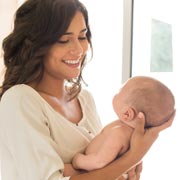 Today we take a look at some amazing baby facts, many of which may come as a surprise. Human babies are incredible in so many ways, but you may not be aware of just how incredible they really are …
Today we take a look at some amazing baby facts, many of which may come as a surprise. Human babies are incredible in so many ways, but you may not be aware of just how incredible they really are … Studies suggest that more babies are born in September than in any other month. In fact, the top four birth days are all in September with 9th September seeing the most babies born, followed in order by 19th, 12th and 17th September. With September being the first term of the year in the UK, it may come as no surprise that those September babies, being the oldest in the class, tend to be the smartest in their peer groups.
Studies suggest that more babies are born in September than in any other month. In fact, the top four birth days are all in September with 9th September seeing the most babies born, followed in order by 19th, 12th and 17th September. With September being the first term of the year in the UK, it may come as no surprise that those September babies, being the oldest in the class, tend to be the smartest in their peer groups. Humans are just one species within a group of 200 primates that includes monkeys, apes and lemurs. Did you know, however, that baby humans are the only primate babies that smile at their parents? That’s unless other primates use some other way of smiling that’s unknown to us, of course — it’s possible!
Humans are just one species within a group of 200 primates that includes monkeys, apes and lemurs. Did you know, however, that baby humans are the only primate babies that smile at their parents? That’s unless other primates use some other way of smiling that’s unknown to us, of course — it’s possible!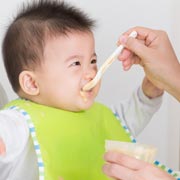 While adults have about 10,000 taste buds on their tongues, new born babies have a staggering 30,000. What’s more, these are spread over their tongues, tonsils, the back of their throat and on the sides and roofs of their mouths. Despite this, it’s not until they’re around 4 months old that they begin to taste salt.
While adults have about 10,000 taste buds on their tongues, new born babies have a staggering 30,000. What’s more, these are spread over their tongues, tonsils, the back of their throat and on the sides and roofs of their mouths. Despite this, it’s not until they’re around 4 months old that they begin to taste salt. Well, kind of — they don’t have a bone kneecap when they’re born, but they do have one of sorts, made of cartilage. This hardens to form bony kneecaps by the time the child reaches between 2 and 6 years of age.
Well, kind of — they don’t have a bone kneecap when they’re born, but they do have one of sorts, made of cartilage. This hardens to form bony kneecaps by the time the child reaches between 2 and 6 years of age. When babies are first born, they are short-sighted, only being able to focus on an area eight to fourteen inches away. This is great for seeing their mum, of course, but they have to rely on peripheral vision for more distant visual cues. In time, though, their distance vision will deepen and improve.
When babies are first born, they are short-sighted, only being able to focus on an area eight to fourteen inches away. This is great for seeing their mum, of course, but they have to rely on peripheral vision for more distant visual cues. In time, though, their distance vision will deepen and improve. For obvious reasons don’t test this but, until they’re about six months old, babies have an automatic ability and instinct to hold their breath when under water. They even automatically adjust their pulse rate and outer blood vessels while they’re submerged.
For obvious reasons don’t test this but, until they’re about six months old, babies have an automatic ability and instinct to hold their breath when under water. They even automatically adjust their pulse rate and outer blood vessels while they’re submerged. Did you know that breast milk adapts itself to perfectly suit the infant drinking it? As the baby grows, the milk composition changes automatically, providing the exact calorific content that the infant needs.
Did you know that breast milk adapts itself to perfectly suit the infant drinking it? As the baby grows, the milk composition changes automatically, providing the exact calorific content that the infant needs.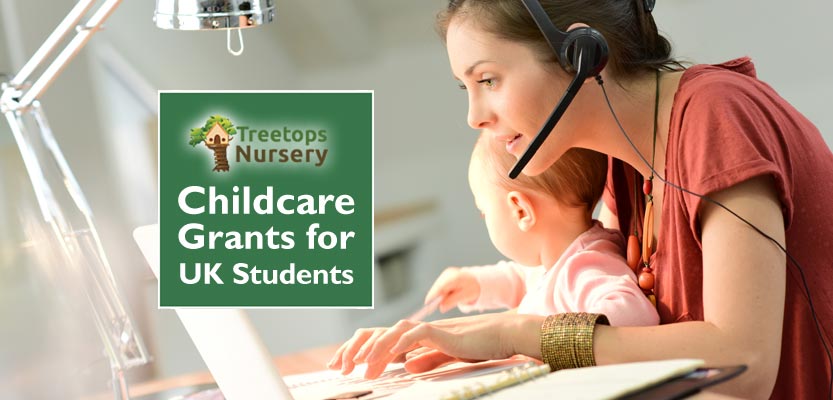
 Are you a parent who wants to continue studying in higher education, but may struggle to afford childcare costs? If so, we have some great news for you. Student Finance England offers eligible students, who are also parents, a generous grant for their child’s childcare. This may allow them to continue with higher education in the knowledge that their child is being looked after by childcare professionals while they study. It can make a real difference, allowing parents to concentrate on studying and potentially increase household income once they graduate their courses.
Are you a parent who wants to continue studying in higher education, but may struggle to afford childcare costs? If so, we have some great news for you. Student Finance England offers eligible students, who are also parents, a generous grant for their child’s childcare. This may allow them to continue with higher education in the knowledge that their child is being looked after by childcare professionals while they study. It can make a real difference, allowing parents to concentrate on studying and potentially increase household income once they graduate their courses. To be eligible, the following rules apply:
To be eligible, the following rules apply: The Childcare Grant for students is worth up to 85% of the cost of your childcare while you’re studying in further education.
The Childcare Grant for students is worth up to 85% of the cost of your childcare while you’re studying in further education.
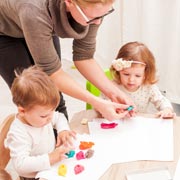 Treetops Nursery adheres to the Early Years Foundation Stage (‘EYFS’) framework. This is a structured approach to learning and development for under-fives and is prescribed, by the UK Government, for childcare settings such as ours. It covers 7 key areas of focus for learning and development, which are explained concisely on
Treetops Nursery adheres to the Early Years Foundation Stage (‘EYFS’) framework. This is a structured approach to learning and development for under-fives and is prescribed, by the UK Government, for childcare settings such as ours. It covers 7 key areas of focus for learning and development, which are explained concisely on  Goals for Communication & Language, a prime area of focus within the EYFS framework, include performance against benchmarks for attentive listening, responding appropriately to what they’ve heard, speaking skills, good use of English and self-expression skills.
Goals for Communication & Language, a prime area of focus within the EYFS framework, include performance against benchmarks for attentive listening, responding appropriately to what they’ve heard, speaking skills, good use of English and self-expression skills. Goals for physical development, the third of the prime focus areas of the EYFS, centre around gross and fine motor skills. For their gross motor skills, goals are set for skills like negotiation around spaces and obstacles, appropriate movement skills for doing so, suitable balance, strength and coordination skills. With regard to fine motor skills, goals are set around things like the ability to appropriately hold and use writing instruments and tools, and demonstrating accuracy when doing so.
Goals for physical development, the third of the prime focus areas of the EYFS, centre around gross and fine motor skills. For their gross motor skills, goals are set for skills like negotiation around spaces and obstacles, appropriate movement skills for doing so, suitable balance, strength and coordination skills. With regard to fine motor skills, goals are set around things like the ability to appropriately hold and use writing instruments and tools, and demonstrating accuracy when doing so. These include understanding numbers, counting, recognising patterns within numbers and number systems, comparison and comprehension of quantities, recalling number bonds and recognition of odds, evens, etc.
These include understanding numbers, counting, recognising patterns within numbers and number systems, comparison and comprehension of quantities, recalling number bonds and recognition of odds, evens, etc.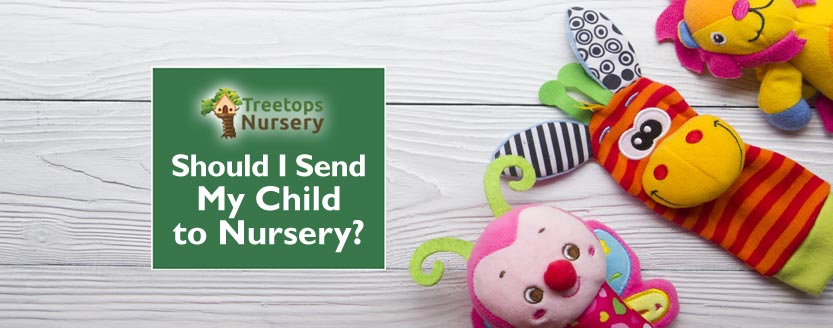
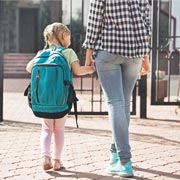 Many new parents ask themselves whether they should send their baby, toddler or under-five child to nursery/pre-school. What exactly are the benefits to the child? Well, studies have shown that there are clear benefits for children if they attend a good nursery or pre-school in their early years. That good aspect is crucial, though, and as a good nursery ourselves (
Many new parents ask themselves whether they should send their baby, toddler or under-five child to nursery/pre-school. What exactly are the benefits to the child? Well, studies have shown that there are clear benefits for children if they attend a good nursery or pre-school in their early years. That good aspect is crucial, though, and as a good nursery ourselves (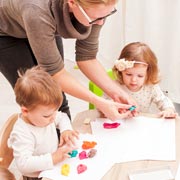 First, though, let’s clarify what makes a good nursery superior to a mediocre one. To give just a few examples, a good nursery will educate children under their care — they don’t simply babysit them because parents are at work. They’ll nurture children’s wellbeing, their learning and their development. They’ll create a learning and development programme that’s tailored to the strengths, weaknesses and interests of each individual child. A good nursery will set personal goals and continually assess the child’s progress, actually in partnership with parents. They’ll help every child to achieve personal bests in every area of a good Early Years curriculum. They’ll also do everything they can to help each child become school-ready by the time they leave, so they can move on seamlessly to Reception Year at primary school. Along the way, a good nursery, like Treetops, will help children in a huge number of ways, becoming more able, more self-confident, more independent, well-mannered, knowledgeable, aware of what’s right and wrong, able to socialise with others in an appropriate way — and so much more.
First, though, let’s clarify what makes a good nursery superior to a mediocre one. To give just a few examples, a good nursery will educate children under their care — they don’t simply babysit them because parents are at work. They’ll nurture children’s wellbeing, their learning and their development. They’ll create a learning and development programme that’s tailored to the strengths, weaknesses and interests of each individual child. A good nursery will set personal goals and continually assess the child’s progress, actually in partnership with parents. They’ll help every child to achieve personal bests in every area of a good Early Years curriculum. They’ll also do everything they can to help each child become school-ready by the time they leave, so they can move on seamlessly to Reception Year at primary school. Along the way, a good nursery, like Treetops, will help children in a huge number of ways, becoming more able, more self-confident, more independent, well-mannered, knowledgeable, aware of what’s right and wrong, able to socialise with others in an appropriate way — and so much more. When a child gets a good educational grounding during their early years, their behaviour around others is also seen to improve, with better self-regulation, less problems with peers and fewer emotional issues. A 2002 study (Sammons et al.) found that the benefits could be seen from as young as two.
When a child gets a good educational grounding during their early years, their behaviour around others is also seen to improve, with better self-regulation, less problems with peers and fewer emotional issues. A 2002 study (Sammons et al.) found that the benefits could be seen from as young as two.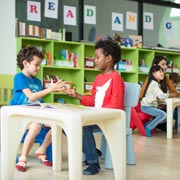 The most far-reaching benefits of a good early years education were found to be for children from disadvantaged backgrounds. The 2020 impact study by the DfE found the following:
The most far-reaching benefits of a good early years education were found to be for children from disadvantaged backgrounds. The 2020 impact study by the DfE found the following: Benefits for Families & the Nation
Benefits for Families & the Nation
 Did you know that you can grow vegetables, salads and herbs at home, almost free of cost? You don’t need seeds and you don’t even need a garden! Today we’ll explain how you and your child can help the household with an almost endless supply of potentially free, home-grown fresh produce, all year round. Children will have enormous fun with this amazing activity, whilst learning new skills and gaining important knowledge along the way. Even better — you all get to eat the produce once the home-grown ‘crops’ are ready! And it should save money for the household.
Did you know that you can grow vegetables, salads and herbs at home, almost free of cost? You don’t need seeds and you don’t even need a garden! Today we’ll explain how you and your child can help the household with an almost endless supply of potentially free, home-grown fresh produce, all year round. Children will have enormous fun with this amazing activity, whilst learning new skills and gaining important knowledge along the way. Even better — you all get to eat the produce once the home-grown ‘crops’ are ready! And it should save money for the household. One of the many beauties of this activity is that you don’t need to buy any seeds or plants specifically for the task. You are going to show your child how to regrow small off-cuts of vegetables and herbs that you would already have bought as part of your weekly shop. To explain, some of the parts that you’d normally discard can actually be used to grow new vegetables — lettuce, for example. And, for herbs, there’s an easy and free way to grow new plants from small cuttings of shop-bought herbs that you may have purchased anyway (basil or parsley, for example). Using this approach, you could grow your own vegetables, salads and herbs and, in theory, never have to buy any again! We’ll explain later, in more detail. First, we’ll look at what you and your child will need for your plants to grow in.
One of the many beauties of this activity is that you don’t need to buy any seeds or plants specifically for the task. You are going to show your child how to regrow small off-cuts of vegetables and herbs that you would already have bought as part of your weekly shop. To explain, some of the parts that you’d normally discard can actually be used to grow new vegetables — lettuce, for example. And, for herbs, there’s an easy and free way to grow new plants from small cuttings of shop-bought herbs that you may have purchased anyway (basil or parsley, for example). Using this approach, you could grow your own vegetables, salads and herbs and, in theory, never have to buy any again! We’ll explain later, in more detail. First, we’ll look at what you and your child will need for your plants to grow in.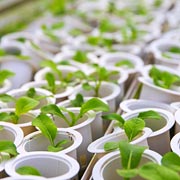 If your household already has flower pots or seed trays, then great. If not, there’s not even any need to buy them if you simply recycle things like empty egg cartons, used yoghurt pots, margarine tubs, the plastic trays from ready meals and suchlike. So long as they’ll hold some earth/compost and some holes are pierced in the bottom for drainage (this is best if done by an adult, for safety), then you’re almost good to go.
If your household already has flower pots or seed trays, then great. If not, there’s not even any need to buy them if you simply recycle things like empty egg cartons, used yoghurt pots, margarine tubs, the plastic trays from ready meals and suchlike. So long as they’ll hold some earth/compost and some holes are pierced in the bottom for drainage (this is best if done by an adult, for safety), then you’re almost good to go.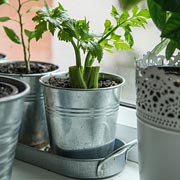 Now for the really clever, fun part! Instead of throwing away the ‘root’ part — that you’d normally cut off and discard — from the bottom of vegetables like onions, celery, garlic cloves, beetroot and lettuce, your child should save them, because that’s the part that will regrow if you encourage it. Show your child how to safely cut off and save a section about an inch deep, containing that ‘root’ section, from the bottom of used vegetables from your ordinary, weekly shop. Green onions, spring onions, lemon grass, various types of lettuce, Swiss chard and carrots are all additional examples of vegetables that have this bottom root section that can be harvested for later regrowth. Ginger too, but this takes significantly longer to regrow.
Now for the really clever, fun part! Instead of throwing away the ‘root’ part — that you’d normally cut off and discard — from the bottom of vegetables like onions, celery, garlic cloves, beetroot and lettuce, your child should save them, because that’s the part that will regrow if you encourage it. Show your child how to safely cut off and save a section about an inch deep, containing that ‘root’ section, from the bottom of used vegetables from your ordinary, weekly shop. Green onions, spring onions, lemon grass, various types of lettuce, Swiss chard and carrots are all additional examples of vegetables that have this bottom root section that can be harvested for later regrowth. Ginger too, but this takes significantly longer to regrow.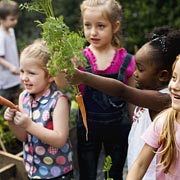 The compost should be kept moist as the vegetable regrows into another one that can, again, be harvested to eat as part of a healthy meal.
The compost should be kept moist as the vegetable regrows into another one that can, again, be harvested to eat as part of a healthy meal.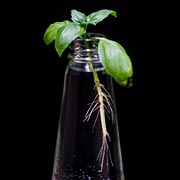 Herbs like basil, coriander, parsley, rosemary are also easy to regrow. When you’ve used most of them from your weekly shop for meals, save a few clippings from left-over stems. Clipping length will be different depending on the herb used. For example, basil clippings should be about 4 inches (100mm) long and rosemary clippings should be 2 to 3 inches (50-75mm) long. You may need to experiment a bit at first, so save a few different lengths if unsure initially.
Herbs like basil, coriander, parsley, rosemary are also easy to regrow. When you’ve used most of them from your weekly shop for meals, save a few clippings from left-over stems. Clipping length will be different depending on the herb used. For example, basil clippings should be about 4 inches (100mm) long and rosemary clippings should be 2 to 3 inches (50-75mm) long. You may need to experiment a bit at first, so save a few different lengths if unsure initially. Another way to regrow shop-bought vegetables is to see if they have seeds inside. Tomatoes and peppers are great examples of these. So, when you’re next using them up for meals, get your child to save the seeds from things like peppers (you’d normally discard these anyway) and some seeds from a tomato — each one contains many. These too can be used to grow brand new plants and vegetables for next to nothing. It’s a little more advanced and they need more room, though. The best time to harvest tomato seeds is between summer and autumn, then plant them in spring if they’re intended for the garden.
Another way to regrow shop-bought vegetables is to see if they have seeds inside. Tomatoes and peppers are great examples of these. So, when you’re next using them up for meals, get your child to save the seeds from things like peppers (you’d normally discard these anyway) and some seeds from a tomato — each one contains many. These too can be used to grow brand new plants and vegetables for next to nothing. It’s a little more advanced and they need more room, though. The best time to harvest tomato seeds is between summer and autumn, then plant them in spring if they’re intended for the garden. 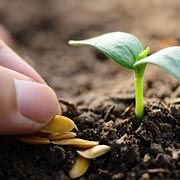 It’s similar for marrows, courgettes, pumpkins and squashes, although those need significant space (they’ll want to spread out), so may be more suitable outside once they begin to grow significantly.
It’s similar for marrows, courgettes, pumpkins and squashes, although those need significant space (they’ll want to spread out), so may be more suitable outside once they begin to grow significantly. Children will love looking after these living things and seeing them grow or regrow. They will learn so much along the way and will have a great sense of achievement when successful. Once they’ve succeeded in producing something they can eat (… and potentially regrow again) they’ll probably want to do it more and try different things. The result, of course, is also fresh produce, which is rich in vitamins and nutrients and good for family health. Children will have been entertained, they’ll understand nature better and they’ll learn skills like patience and being responsible too. A key lesson is also to learn from mistakes — something we all have to do. What’s more, this natural activity for children may even save money for the household. All in all, it’s a great activity from every perspective.
Children will love looking after these living things and seeing them grow or regrow. They will learn so much along the way and will have a great sense of achievement when successful. Once they’ve succeeded in producing something they can eat (… and potentially regrow again) they’ll probably want to do it more and try different things. The result, of course, is also fresh produce, which is rich in vitamins and nutrients and good for family health. Children will have been entertained, they’ll understand nature better and they’ll learn skills like patience and being responsible too. A key lesson is also to learn from mistakes — something we all have to do. What’s more, this natural activity for children may even save money for the household. All in all, it’s a great activity from every perspective.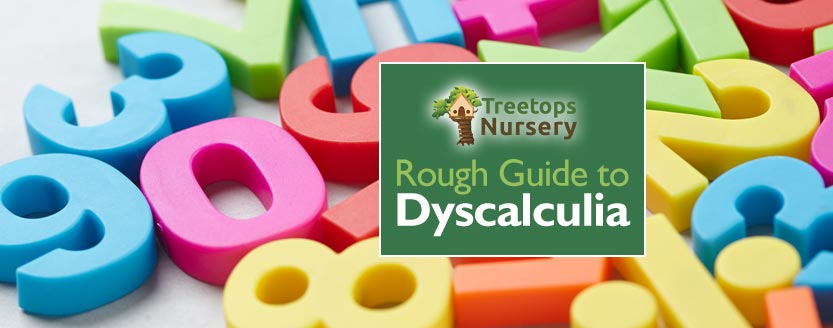
 Today, we look at another condition that can affect children: dyscalculia. This is a brain-related learning difficulty that affects both children and adults. Somewhere between 3 and 6 percent of the UK population is affected and some may also have other conditions like
Today, we look at another condition that can affect children: dyscalculia. This is a brain-related learning difficulty that affects both children and adults. Somewhere between 3 and 6 percent of the UK population is affected and some may also have other conditions like  The Diagnostic & Statistical Manual of Mental Disorders (DSM-5), as used by psychiatric professionals in the U.S., describes how those with developmental dyscalculia have problems making sense of numbers, memorising arithmetic facts and making fluent and accurate maths calculations. Clearly, such limitations can have a profound effect, including in terms of education because maths affects so many learning topics.
The Diagnostic & Statistical Manual of Mental Disorders (DSM-5), as used by psychiatric professionals in the U.S., describes how those with developmental dyscalculia have problems making sense of numbers, memorising arithmetic facts and making fluent and accurate maths calculations. Clearly, such limitations can have a profound effect, including in terms of education because maths affects so many learning topics. They may be more prone to continue using their fingers to count, long after their peers have moved onto mental arithmetic.
They may be more prone to continue using their fingers to count, long after their peers have moved onto mental arithmetic. Use of lined or graph paper can sometimes help too, so as to keep corresponding numbers in line and steps more clear.
Use of lined or graph paper can sometimes help too, so as to keep corresponding numbers in line and steps more clear.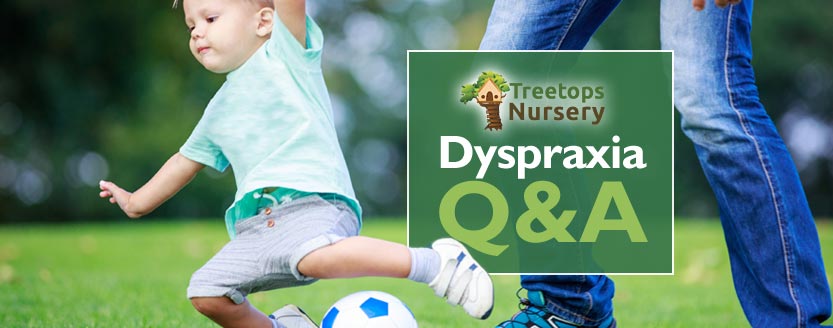
 A: Dyspraxia is a condition that impairs a person’s ability to fully control motor functions, for example coordinating movement and physical activity. Children with dyspraxia may therefore appear ‘clumsy’. It can be anything from mild to more severe and obviously the mildest variety is hardest for parents to spot. Dyspraxia is classified as a type of Developmental Co-ordination Disorder (‘DCD’) and indeed healthcare professionals may use this terminology for the condition. They may also refer to it as a Specific Developmental Disorder of Motor Function, or ‘SDDMF’ for short.
A: Dyspraxia is a condition that impairs a person’s ability to fully control motor functions, for example coordinating movement and physical activity. Children with dyspraxia may therefore appear ‘clumsy’. It can be anything from mild to more severe and obviously the mildest variety is hardest for parents to spot. Dyspraxia is classified as a type of Developmental Co-ordination Disorder (‘DCD’) and indeed healthcare professionals may use this terminology for the condition. They may also refer to it as a Specific Developmental Disorder of Motor Function, or ‘SDDMF’ for short. A: Dyspraxia can be something people were simply born with (that’s the developmental kind) or, for others, it was acquired through brain trauma, for example because of an injury or stroke. In this post, however, we’ll concentrate on developmental dyspraxia in relation to children.
A: Dyspraxia can be something people were simply born with (that’s the developmental kind) or, for others, it was acquired through brain trauma, for example because of an injury or stroke. In this post, however, we’ll concentrate on developmental dyspraxia in relation to children. Children with dyspraxia may also have difficulty:
Children with dyspraxia may also have difficulty: A: Due to its nature and particularly in regard to its negative effect on sports and active play skills, dyspraxia can lead to children becoming less naturally fit, with all the ramifications that brings.
A: Due to its nature and particularly in regard to its negative effect on sports and active play skills, dyspraxia can lead to children becoming less naturally fit, with all the ramifications that brings. A: Once diagnosed, tailored help is available for children with dyspraxia/DCD, from a variety of specialists. Support may be needed throughout childhood, including at pre-school and school, to help optimise ability around physical tasks and processes. As every child’s challenges will be unique, a support plan will be customised for each. Support may involve a variety of professionals who will aim to help the child overcome their difficulties as far as possible and to build their confidence, self-esteem, abilities etc. The specialists involved may include paediatric occupational therapists, paediatricians, clinical psychologists, educational psychologists or a mixture of several. All will work in tandem, of course, with childcare professionals, teachers, parents and guardians.
A: Once diagnosed, tailored help is available for children with dyspraxia/DCD, from a variety of specialists. Support may be needed throughout childhood, including at pre-school and school, to help optimise ability around physical tasks and processes. As every child’s challenges will be unique, a support plan will be customised for each. Support may involve a variety of professionals who will aim to help the child overcome their difficulties as far as possible and to build their confidence, self-esteem, abilities etc. The specialists involved may include paediatric occupational therapists, paediatricians, clinical psychologists, educational psychologists or a mixture of several. All will work in tandem, of course, with childcare professionals, teachers, parents and guardians. 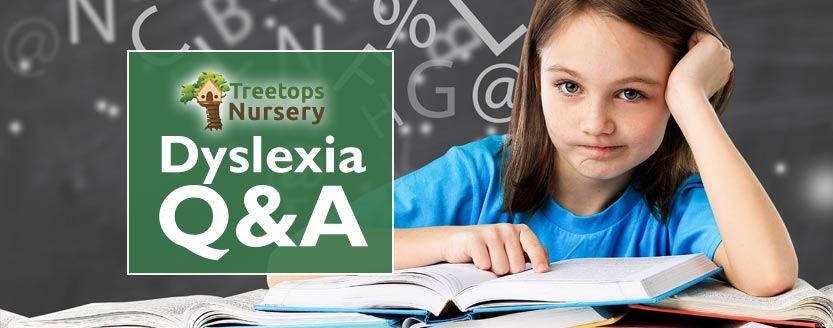
 A: Dyslexia is categorised as a Specific Learning Difficulty (‘SpLD’) in the UK. Most notably, it adversely affects a person’s ability to read because of a general difficulty in learning or interpreting letters, words, and often other symbols. Indeed, it was originally referred to as word blindness. There are other ways dyslexia affects people, though, and we’ll come to those in more detail later.
A: Dyslexia is categorised as a Specific Learning Difficulty (‘SpLD’) in the UK. Most notably, it adversely affects a person’s ability to read because of a general difficulty in learning or interpreting letters, words, and often other symbols. Indeed, it was originally referred to as word blindness. There are other ways dyslexia affects people, though, and we’ll come to those in more detail later. A: As it’s a genetic issue, people are born with the condition. Symptoms may begin to show as a child matures during early learning and beyond. As it is something that’s inherent in their physiology, it is not something people can ‘grow out’ of. It is a lifelong issue. It can be managed, of course, with various approaches available to mitigate its effects as far as possible.
A: As it’s a genetic issue, people are born with the condition. Symptoms may begin to show as a child matures during early learning and beyond. As it is something that’s inherent in their physiology, it is not something people can ‘grow out’ of. It is a lifelong issue. It can be managed, of course, with various approaches available to mitigate its effects as far as possible. They may also have trouble remembering words.
They may also have trouble remembering words. A: Being unable to easily read will hold children back. If they have trouble reading, they will have trouble reading text books for any of the topics at school. Some classroom and test situations will become more stressful for them as a result.
A: Being unable to easily read will hold children back. If they have trouble reading, they will have trouble reading text books for any of the topics at school. Some classroom and test situations will become more stressful for them as a result.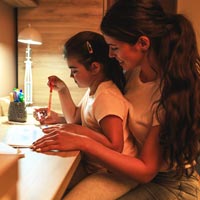 One-to-one help from a teacher, teaching assistant or specialist;
One-to-one help from a teacher, teaching assistant or specialist; A: Childcare professionals will be on the look-out for any signs of possible dyslexia (see the list of possible signs earlier in this article). Parents can do the same and, because the condition is thought to be inherited, this is particularly important if one or more of the child’s parents is dyslexic. Signs can be hard to spot, but the earlier the condition is recognised, the sooner the child can be helped. If any signs of possible dyslexia are suspected, supervising adults and childcare professionals can initially monitor the child’s progress going forwards. They can also assess the child against benchmarks for the same age or peer group in case it’s just a temporary blip in their learning progress.
A: Childcare professionals will be on the look-out for any signs of possible dyslexia (see the list of possible signs earlier in this article). Parents can do the same and, because the condition is thought to be inherited, this is particularly important if one or more of the child’s parents is dyslexic. Signs can be hard to spot, but the earlier the condition is recognised, the sooner the child can be helped. If any signs of possible dyslexia are suspected, supervising adults and childcare professionals can initially monitor the child’s progress going forwards. They can also assess the child against benchmarks for the same age or peer group in case it’s just a temporary blip in their learning progress.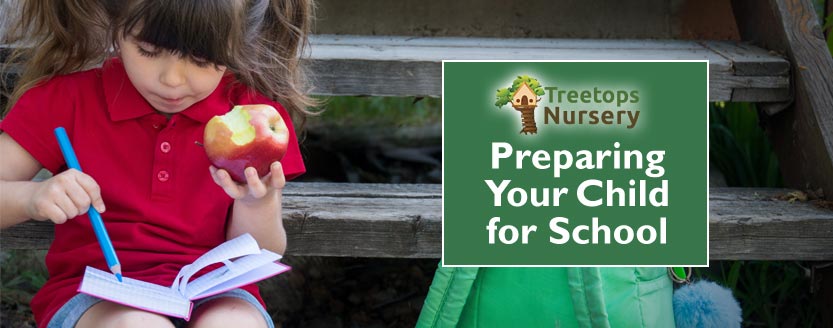
 Following up from our post last month about
Following up from our post last month about  Have you sat down with your child and forewarned them what’s going to happen, when, how and why? Put their mind at rest so they’re mentally well-prepared, ahead of time.
Have you sat down with your child and forewarned them what’s going to happen, when, how and why? Put their mind at rest so they’re mentally well-prepared, ahead of time.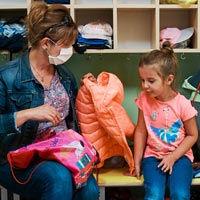 It’s also great if you and your child have already visited the school previously, for example during an open day or evening.
It’s also great if you and your child have already visited the school previously, for example during an open day or evening. As a parent, you’ll need to know where to go and at what time. That’s the case for both drop-off and pick-up. Ensure you know whether the first day is going to be the same as a ‘normal’ day.
As a parent, you’ll need to know where to go and at what time. That’s the case for both drop-off and pick-up. Ensure you know whether the first day is going to be the same as a ‘normal’ day.